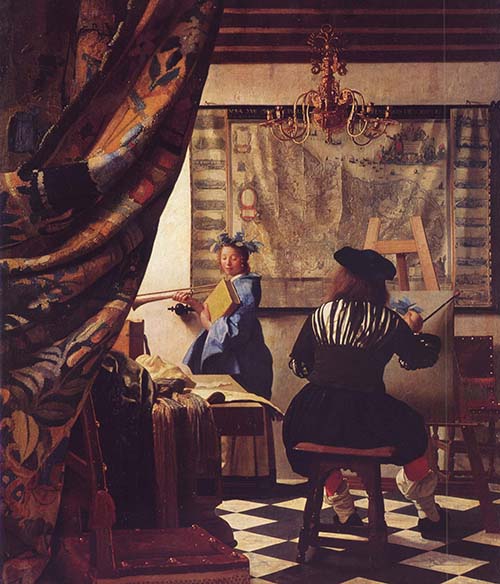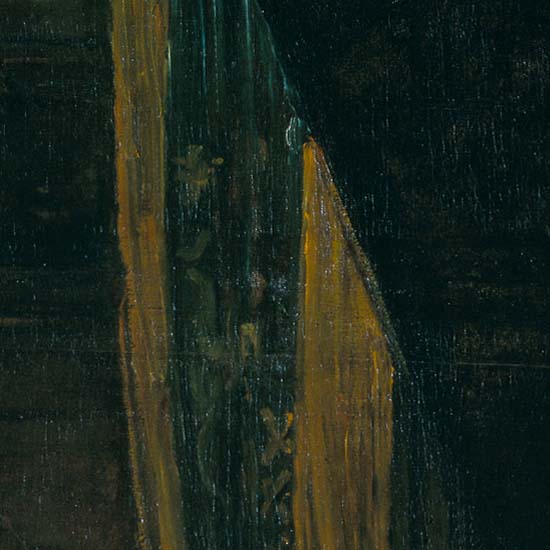Some Masterpieces from the Public Domain
Version 1.0, © 2009 by Dale Cotton, all rights reserved
Digital restoration
When I hear the word "restoration" in relation to an old painting, I immediately think of the specialized task of repair work done on the painting itself. But in this case I'm referring to restoration of the available public domain image files of the paintings, not to the paintings themselves. As I quickly discovered, the vast majority of the available image files are decade-old film scans done with primitive equipment and no semblance of a modern colour-profiled and calibrated workflow. Consider this scan of Vermeer's The Art (or Allegory) of Painting:

Fig. 2-1: Jan Vermeer van Delft: The Art of Paining, c. 1666
It's disfigured by a magenta cast as blatant as a plutocrat's limo, yet no attempt was made to correct it. A simple Levels adjustment to the green channel would have done wonders.
Or consider this scan of Vermeer's Woman in Blue Reading a Letter:

Fig. 2-2: Jan Vermeer van Delft: Woman in Blue Reading a Letter, c. 1664 (version 1)
Very pretty, but would Vermeer really have painted a jaundiced model? If we look for another version of the same picture on-line, we come up with this:

Fig. 2-3: Jan Vermeer van Delft: Woman in Blue Reading a Letter, c. 1664 (version 2)
These colours are closer to being believable but now there's a blue cast in evidence. In contrast, the picture of Diana Leaving her Bath by Boucher, which you can see under the Boucher link below, was taken with a digital camera (Nikon D50 is in the meta-data), and the increase in quality and palpable accuracy is mind-boggling. Until we have similar re-takes of all the public domain masterpieces on-line, the best we can do is make an educated guess in each case.
But colour is far from the only serious issue affecting these older scans. Consider this unreduced segment from the largest scan available of Rembrandt's The Night Watch:

Fig. 2-4: Rembrandt van Rijn: segment from The Night Watch, 1642
What looks to be blue rain streaking down is apparently some sort of damage to the actual painting. While the horizontal streaks seem to be a combination of scanner stutter and a serious scratch running across quite a bit of the width of the canvas. There is also the inevitable crackling of linseed oil drying over centuries, as in:

Fig. 2-5: Jan Vermeer van Delft: Girl with Pearl Earring, 1665
But how obnoxious this crackling is depends entirely on how the painting is lit for the camera. Here we have side lighting that casts a black shadow into every crack, making each crack maximally apparent. Notice also the white specks in the black background, which are some combination of dust on the film and glints off the sheen of the painting's surface.